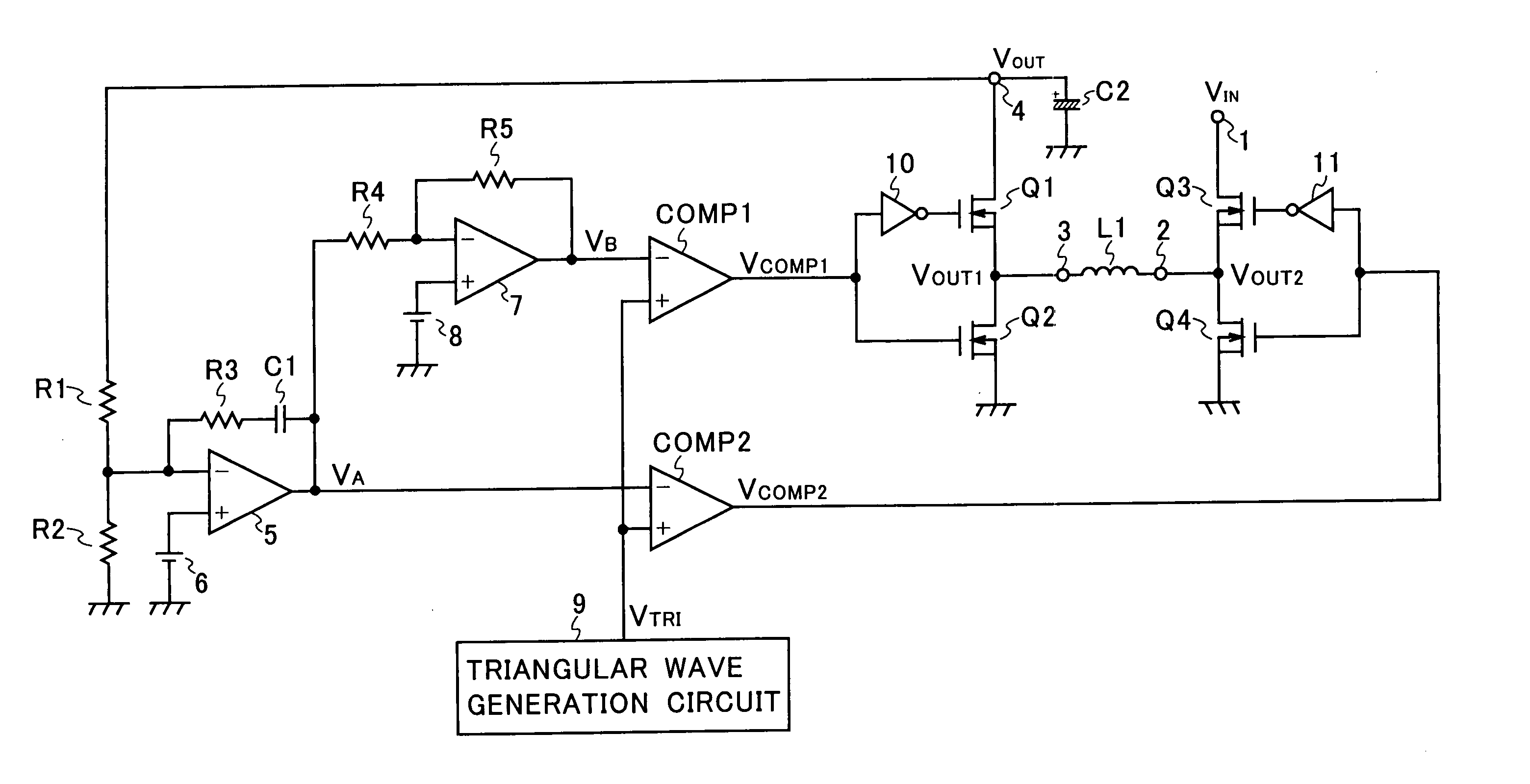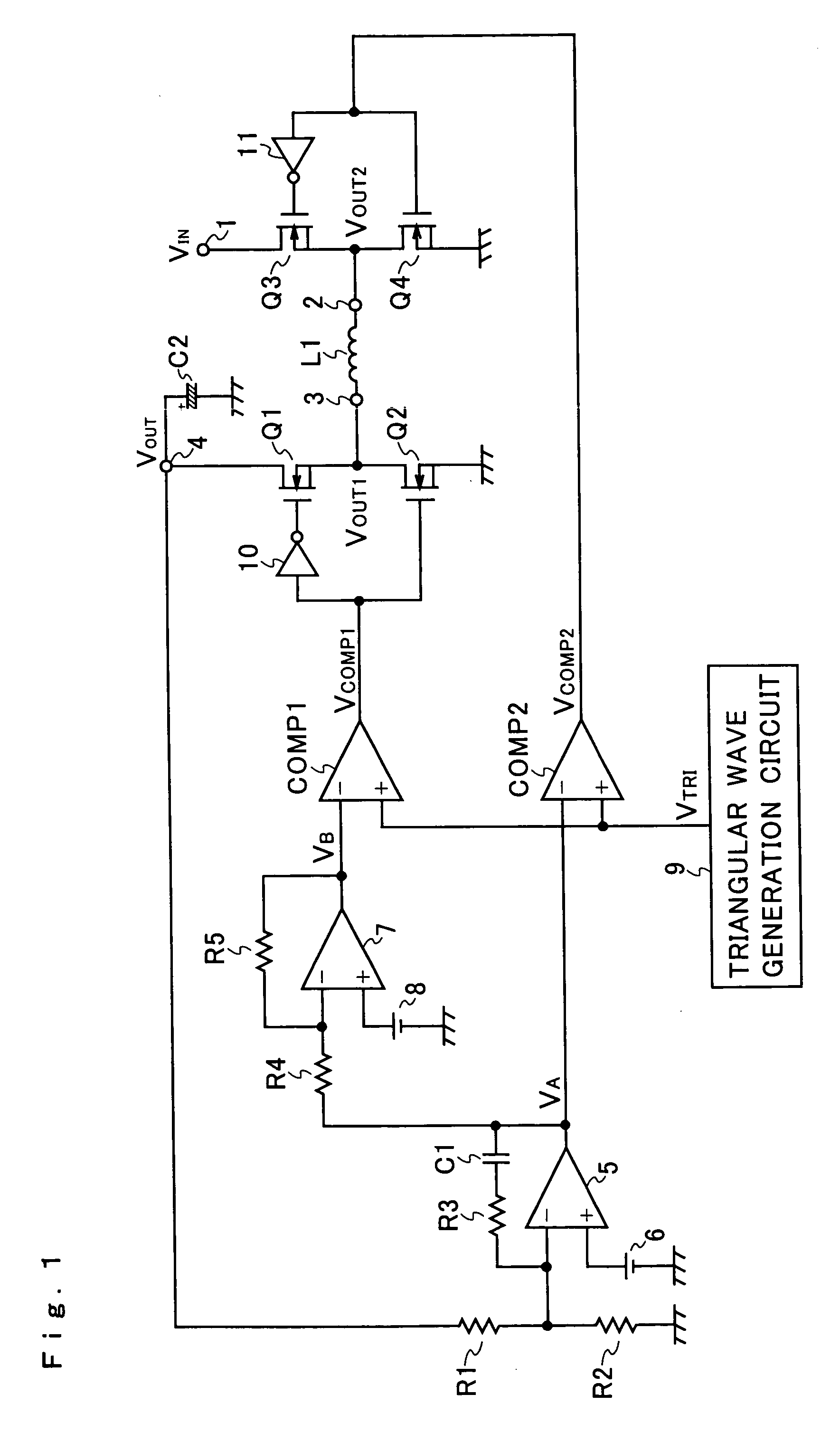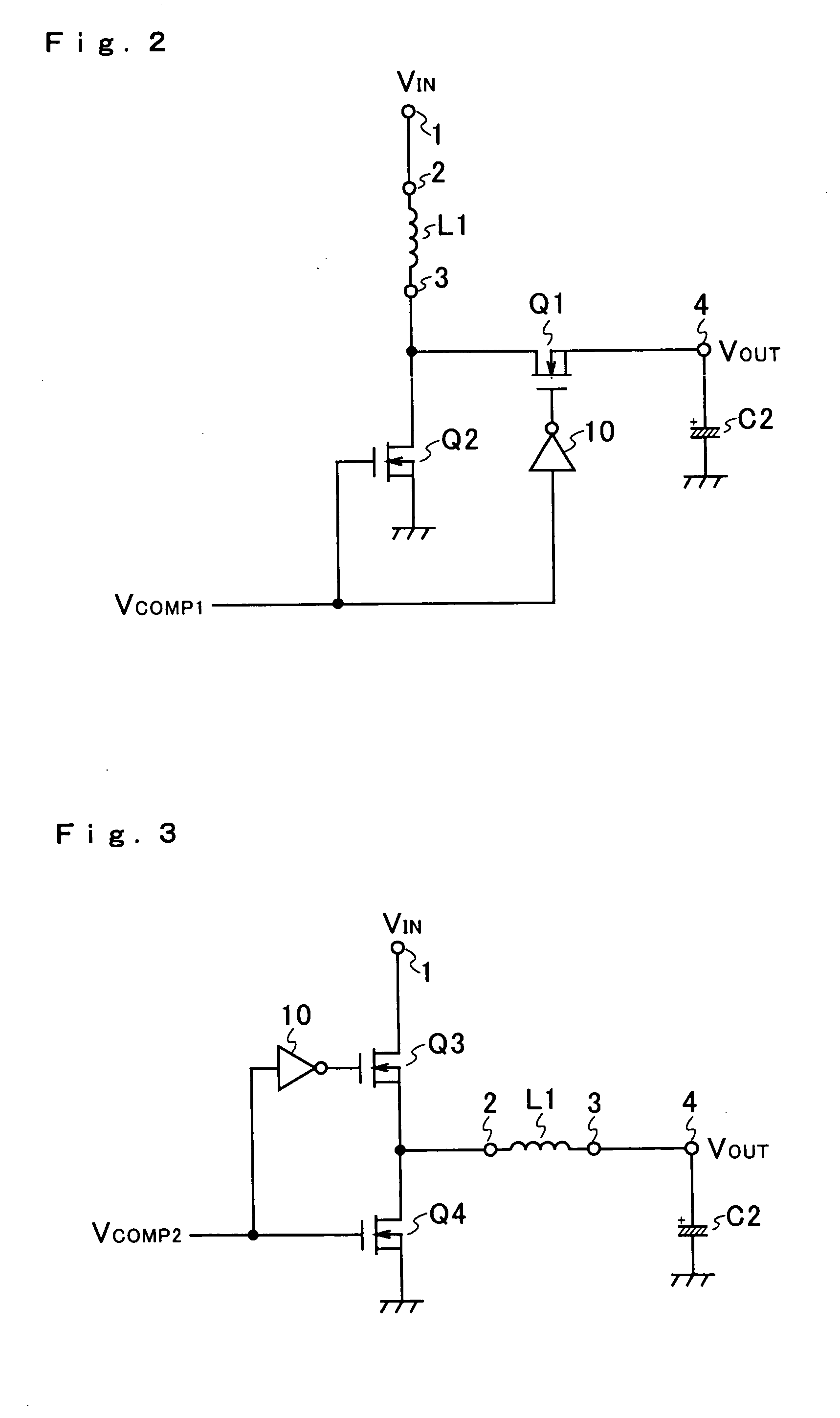Step-up/step-down DC-DC converter and portable device employing it
- Summary
- Abstract
- Description
- Claims
- Application Information
AI Technical Summary
Benefits of technology
Problems solved by technology
Method used
Image
Examples
Embodiment Construction
[0029]FIG. 1 shows an example of the configuration of a step-up / step-down DC-DC converter according to the present invention. The step-up / step-down DC-DC converter shown in FIG. 1 receives, as an input voltage VIN thereto, the output voltage of a direct-current power source (not illustrated) such as a battery. The input voltage VIN is applied to an input terminal 1, which is connected to the drain of an n-channel MOS field-effect transistor (hereinafter referred to as an nMOS transistor) Q3. The source of the nMOS transistor Q3 is connected to a terminal 2 and to the drain of an nMOS transistor Q4. The source of the nMOS transistor Q4 is grounded.
[0030] The terminal 2 is connected through a coil L1 to a terminal 3. The terminal 3 is connected to the source of an nMOS transistor Q1 and to the drain of an nMOS transistor Q2. The drain of the nMOS transistor Q1 is connected to an output terminal 4, and the source of the nMOS transistor Q2 is grounded.
[0031] The output terminal 4 is c...
PUM
 Login to View More
Login to View More Abstract
Description
Claims
Application Information
 Login to View More
Login to View More - R&D
- Intellectual Property
- Life Sciences
- Materials
- Tech Scout
- Unparalleled Data Quality
- Higher Quality Content
- 60% Fewer Hallucinations
Browse by: Latest US Patents, China's latest patents, Technical Efficacy Thesaurus, Application Domain, Technology Topic, Popular Technical Reports.
© 2025 PatSnap. All rights reserved.Legal|Privacy policy|Modern Slavery Act Transparency Statement|Sitemap|About US| Contact US: help@patsnap.com



